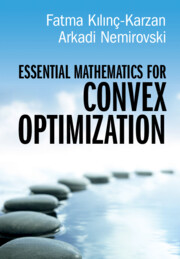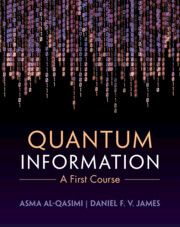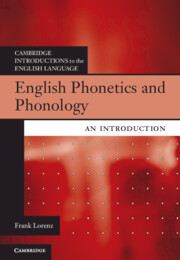Refine search
Actions for selected content:
37953 results in Cambridge Textbooks
3 - The new normal: Contemporary and emerging challenges and opportunities for social work
-
- Book:
- Engaging with Social Work
- Published online:
- 09 October 2025
- Print publication:
- 23 October 2025, pp 68-108
-
- Chapter
- Export citation
2 - What Is Small Data?
-
- Book:
- Big Data in the Psychological Sciences
- Published online:
- 23 October 2025
- Print publication:
- 23 October 2025, pp 13-30
-
- Chapter
- Export citation

Essential Mathematics for Convex Optimization
-
- Published online:
- 22 October 2025
- Print publication:
- 26 June 2025
-
- Textbook
- Export citation

Wireless Communications and Machine Learning
-
- Published online:
- 21 October 2025
- Print publication:
- 03 July 2025
-
- Textbook
- Export citation

Quantum Information
- A First Course
-
- Published online:
- 17 October 2025
- Print publication:
- 26 June 2025
-
- Textbook
- Export citation

English Phonetics and Phonology
- An Introduction
-
- Published online:
- 17 October 2025
- Print publication:
- 10 July 2025
-
- Textbook
- Export citation
Acknowledgments
-
- Book:
- Introduction to Human Neuroimaging
- Published online:
- 23 December 2025
- Print publication:
- 16 October 2025, pp xvii-xviii
-
- Chapter
- Export citation
15 - Computational Neuroimaging
- from Part IV - Complementary Methods
-
- Book:
- Introduction to Human Neuroimaging
- Published online:
- 23 December 2025
- Print publication:
- 16 October 2025, pp 315-329
-
- Chapter
- Export citation
Part IV - Complementary Methods
-
- Book:
- Introduction to Human Neuroimaging
- Published online:
- 23 December 2025
- Print publication:
- 16 October 2025, pp 281-282
-
- Chapter
- Export citation
11 - Basic Analysis of Electrophysiological Signals
- from Part III - Electrophysiological Neuroimaging
-
- Book:
- Introduction to Human Neuroimaging
- Published online:
- 23 December 2025
- Print publication:
- 16 October 2025, pp 226-257
-
- Chapter
- Export citation
Contents
-
- Book:
- Introduction to Human Neuroimaging
- Published online:
- 23 December 2025
- Print publication:
- 16 October 2025, pp v-xii
-
- Chapter
- Export citation
14 - Causal Methods to Modulate Brain Activity
- from Part IV - Complementary Methods
-
- Book:
- Introduction to Human Neuroimaging
- Published online:
- 23 December 2025
- Print publication:
- 16 October 2025, pp 298-314
-
- Chapter
- Export citation
9 - Electromagnetic Field of the Brain
- from Part III - Electrophysiological Neuroimaging
-
- Book:
- Introduction to Human Neuroimaging
- Published online:
- 23 December 2025
- Print publication:
- 16 October 2025, pp 187-202
-
- Chapter
- Export citation
2 - The Physics behind Magnetic Resonance Imaging (MRI)
- from Part I - Structural Neuroimaging
-
- Book:
- Introduction to Human Neuroimaging
- Published online:
- 23 December 2025
- Print publication:
- 16 October 2025, pp 29-44
-
- Chapter
- Export citation
Part II - Hemodynamic Neuroimaging
-
- Book:
- Introduction to Human Neuroimaging
- Published online:
- 23 December 2025
- Print publication:
- 16 October 2025, pp 77-78
-
- Chapter
- Export citation
1 - Introduction and Overview
-
- Book:
- Introduction to Human Neuroimaging
- Published online:
- 23 December 2025
- Print publication:
- 16 October 2025, pp 1-26
-
- Chapter
- Export citation
6 - Image Processing
- from Part II - Hemodynamic Neuroimaging
-
- Book:
- Introduction to Human Neuroimaging
- Published online:
- 23 December 2025
- Print publication:
- 16 October 2025, pp 124-138
-
- Chapter
- Export citation
8 - Advanced Statistical Analyses
- from Part II - Hemodynamic Neuroimaging
-
- Book:
- Introduction to Human Neuroimaging
- Published online:
- 23 December 2025
- Print publication:
- 16 October 2025, pp 159-184
-
- Chapter
- Export citation
12 - Advanced Data Analysis
- from Part III - Electrophysiological Neuroimaging
-
- Book:
- Introduction to Human Neuroimaging
- Published online:
- 23 December 2025
- Print publication:
- 16 October 2025, pp 258-280
-
- Chapter
- Export citation
Index
-
- Book:
- Introduction to Human Neuroimaging
- Published online:
- 23 December 2025
- Print publication:
- 16 October 2025, pp 383-388
-
- Chapter
- Export citation
